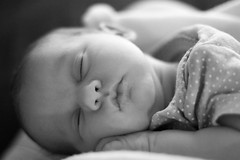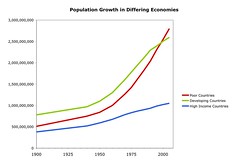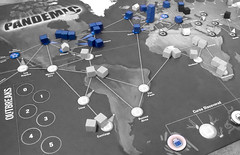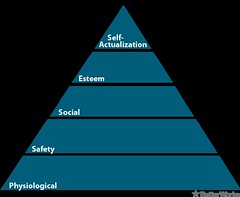| 6156745113 | Developmental Psychology | a branch of psychology that studies physical, cognitive, and social change throughout the life span. |  | 0 |
| 6156745114 | Zygote | the fertilized egg; it enters a 2-week period of rapid cell division and develops into an embryo. |  | 1 |
| 6156745115 | Embryo | the developing human organism from about 2 weeks after fertilization through the second month. |  | 2 |
| 6156745116 | Fetus | the developing human organism from 9 weeks after conception to birth. |  | 3 |
| 6156745117 | Teratogens | agents, such as chemicals and viruses, that can reach the embryo or fetus during prenatal development and cause harm. |  | 4 |
| 6156745118 | Fetal Alcohol Syndrome (FAS) | physical and cognitive abnormalities in children caused by a pregnant woman's heavy drinking. In severe cases, symptoms include noticeable facial misproportions. |  | 5 |
| 6156745119 | Habituation | decreasing responsiveness with repeated stimulation. As infants gain familiarity with repeated exposure to a visual stimulus, their interest wanes and they look away sooner. |  | 6 |
| 6156745120 | Maturation | biological growth processes that enable orderly changes in behavior, relatively uninfluenced by experience. |  | 7 |
| 6156745121 | Cognition | all the mental activities associated with thinking, knowing, remembering, and communicating. |  | 8 |
| 6156745122 | Schema | a concept or framework that organizes and interprets information. |  | 9 |
| 6156745123 | Assimilation | interpreting our new experience in terms of our existing schemas. |  | 10 |
| 6156745124 | Accommodation | Development - adapting our current understandings (schemas) to incorporate new information. |  | 11 |
| 6156745125 | Sensorimotor Stage | in Piaget's theory, the stage (from birth to about 2 years of age) during which infants know the world mostly in terms of their sensory impressions and motor activities. |  | 12 |
| 6156745126 | Object Permanence | the awareness that things continue to exist even when not perceived. |  | 13 |
| 6156745127 | Preoperational Stage | in Piaget's theory, the stage (from 2 to about 6 or 7 years of age) during which a child learns to use language but does not yet comprehend the mental operations of concrete logic. |  | 14 |
| 6156745128 | Conservation | the principle (which Piaget believed to be a part of concrete operational reasoning) that properties such as mass, volume, and number remain the same despite changes in the forms of objects. |  | 15 |
| 6156745129 | Egocentrism | in Piaget's theory, the preoperational child's difficulty taking another's point of view. |  | 16 |
| 6156745130 | Theory of Mind | people's ideas about their own and others' mental states—about their feelings, perceptions, and thoughts, and the behaviors these might predict. |  | 17 |
| 6156745131 | Concrete Operational Stage | in Piaget's theory, the stage of cognitive development (from about 6 or 7 to 11 years of age) during which children gain the mental operations that enable them to think logically about concrete events. |  | 18 |
| 6156745132 | Formal Operational Stage | in Piaget's theory, the stage of cognitive development (normally beginning about age 12) during which people begin to think logically about abstract concepts. |  | 19 |
| 6156745133 | Autism | a disorder that appears in childhood and is marked by deficient communication, social interaction, and understanding of others' states of mind. |  | 20 |
| 6156745134 | Stranger Anxiety | the fear of strangers that infants commonly display, beginning by about 8 months of age. |  | 21 |
| 6156745135 | Attachment | an emotional tie with another person; shown in young children by their seeking closeness to the caregiver and showing distress on separation. |  | 22 |
| 6156745136 | Critical Period | an optimal period shortly after birth when an organism's exposure to certain stimuli or experiences produces proper development. |  | 23 |
| 6156745137 | Imprinting | the process by which certain animals form attachments during a critical period very early in life. |  | 24 |
| 6156745138 | Temperament | a person's characteristic emotional reactivity and intensity. |  | 25 |
| 6156745139 | Basic Trust | according to Erik Erikson, a sense that the world is predictable and trustworthy; said to be formed during infancy by appropriate experiences with responsive caregivers. |  | 26 |
| 6156745140 | Self-Concept | all our thoughts and feelings about ourselves, in answer to the question, "Who am I?" |  | 27 |
| 6156745141 | Gender | in psychology, the biologically and socially influenced characteristics by which people define male and female. |  | 28 |
| 6156745142 | Aggression | physical or verbal behavior intended to hurt someone. |  | 29 |
| 6156745143 | X Chromosome | the sex chromosome found in both men and women. Females have two of these; males have one. One chromosome from each parent produces a female child. |  | 30 |
| 6156745144 | Y Chromosome | the sex chromosome found only in males. When paired with an X chromosome from the mother, it produces a male child. |  | 31 |
| 6156745145 | Testosterone | the most important of the male sex hormones. Both males and females have it, but the additional levels in males stimulates the growth of the male sex organs in the fetus and the development of the male sex characteristics during puberty. |  | 32 |
| 6156745146 | Role | a set of expectations (norms) about a social position, defining how those in the position ought to behave. |  | 33 |
| 6156745147 | Gender Role | a set of expected behaviors for males or for females. |  | 34 |
| 6156745148 | Gender Identity | our sense of being male or female. |  | 35 |
| 6156745149 | Gender Typing | the acquisition of a traditional masculine or feminine role. |  | 36 |
| 6156745150 | Social Learning Theory | the theory that we learn social behavior by observing and imitating and by being rewarded or punished. |  | 37 |
| 6156745151 | Adolescence | the transition period from childhood to adulthood, extending from puberty to independence. |  | 38 |
| 6156745152 | Puberty | the period of sexual maturation, during which a person becomes capable of reproducing. |  | 39 |
| 6156745153 | Primary Sex Characteristics | the body structures (ovaries, testes, and external genitalia) that make sexual reproduction possible. |  | 40 |
| 6156745154 | Secondary Sex Characteristics | nonreproductive sexual characteristics, such as female breasts and hips, male voice quality, and body hair. |  | 41 |
| 6156745155 | Menarche | the first menstrual period. |  | 42 |
| 6156745156 | Identity | our sense of self; according to Erikson, the adolescent's task is to solidify a sense of self by testing and integrating various roles. |  | 43 |
| 6156745157 | Social Identity | the "we" aspect of our self-concept; the part of our answer to "Who am I?" that comes from our group memberships. |  | 44 |
| 6156745158 | Intimacy | in Erikson's theory, the ability to form close, loving relationships; a primary developmental task in late adolescence and early adulthood. |  | 45 |
| 6156745159 | Emerging Adulthood | for some people in modern cultures, a period from the late teens to mid-twenties, bridging the gap between adolescent dependence and full independence and responsible adulthood. |  | 46 |
| 6156745160 | Menopause | the time of natural cessation of menstruation; also refers to the biological changes a woman experiences as her ability to reproduce declines. |  | 47 |
| 6156745161 | Cross-Sectional Study | a study in which people of different ages are compared with one another. |  | 48 |
| 6156745162 | Longitudinal Study | research in which the same people are restudied and retested over a long period. |  | 49 |
| 6156745163 | Crystallized Intelligence | our accumulated knowledge and verbal skills; tends to increase with age. |  | 50 |
| 6156745164 | Fluid Intelligence | our ability to reason speedily and abstractly; tends to decrease during late adulthood. |  | 51 |
| 6156745165 | Social Clock | the culturally preferred timing of social events such as marriage, parenthood, and retirement. |  | 52 |
| 6156758630 | Moro reflex | Infant startle response to sudden, intense noise or movement. When startled the newborn arches its back, throws back its head, and flings out its arms and legs. Usually disappears after four months. | | 53 |
| 6156761301 | Babinski reflex | Reflex in which a newborn fans out the toes when the sole of the foot is touched | | 54 |
| 6156763575 | palmar reflex | when you place your finger in an infant's palm, he will grasp it | | 55 |
| 6156765517 | object permanence | The realization of infants that objects continue to exist even when they are out of sight | | 56 |
| 6156769114 | holographic speech | one word declarations by children at about age 1 | | 57 |
| 6156770663 | Vygotsky | Believed that cognitive development was largely the result of the child's interaction with members of his or her own culture rather than his or her interaction with concrete objects
Zones of Proximal Devl: social interaction influences learning. Students learn best when teachers teach them something they don't know yet, and then provide students opportunities to practice and learn with other peers and adults supporting. | | 58 |
| 6156776273 | latchkey children | latchkey kid or latchkey child is a child who returns from school to an empty home because their parent or parents are away at work, or a child who is often left at home with little parental supervision.
are left unsupervised after school and are at a higher risk for accidents, isolated and alone | | 59 |
| 6156781742 | concrete operational | in Piaget's theory, the stage of cognitive development (from about 6 or 7 to 11 years of age) during which children gain the mental operations that enable them to think logically about concrete events | | 60 |
| 6156785558 | Piaget | theorist that developed a series of stages in which an individual passes during cognitive development.
Growth occurs in stages - sensory motor (0-2), pre-operational, experiential (2-7), concrete operational (7-11) formal operational (11+) formal and abstract operations | | 61 |
| 6156788086 | Kohlberg | theorist who claimed individuals went through a series of stages in the process of moral development.
Development; Concepts: stages of moral development; Study Basics: Studied boys responses to and processes of reasoning in making moral decisions. Most famous moral dilemma is "Heinz" who has an ill wife and cannot afford the medication. Should he steal the medication and why?
Developing children progress through a predictable sequence of stages of moral reasoning (preconventional, conventional, postconventional). | | 62 |
| 6156793432 | Erikson | Proposed that individuals go through 8 distinct, universal stages of development. Each stage consists of a developmental task that confronts individuals with a crisis.
Infant; 0-2 years: Trust Vs. mistrust 2. Toddler; 2-3 years: Autonomy Vs shame and doubt 3. Preschool; 3-5 years: Initiative Vs guilt 4. School age; 6-12 years: Industry Vs inferiority 5. Adolescent; 12-18 years: Identity Vs identity (or role) confusion 6. Young adult: 18-25 years: Intimacy Vs isolation 7. Middle adult: 25-45 years: Generativity Vs stagnation 8. Older adult: 45-death: Ego integrity Vs despair | | 63 |
| 6156798629 | Bandura | Social Learning Theory
Observational learning; Bobo dolls; social-cognitive theory
Social Learning Theory - emphasizes modeling or observational learning as a powerful source of development and behavior modification | | 64 |
| 6156802557 | James Marcia | Studied the different ways that adolescents handle commitment and cope with identity crisis
Identity Status Theory; The first identity status, identity diffusion, describes youth who have neither explored nor committed to any particular identity. Thus, this identity status represents a low level of exploration and a low level of commitment. The second identity status is the identity foreclosure status. This identity status represents a low degree of exploration but a high degree of commitment. At this identity status adolescents are not actively trying to determine what is important to them. The third identity status is called moratorium. This identity status represents high degree of exploration but a low degree of commitment. At this status, youth are in the midst of an identity "crisis" which has prompted them to explore and experiment with different values, beliefs, and goals. The final identity status is identity achievement. This identity status represents both a high degree of exploration and a high degree of commitment. Youth are said to have achieved their identity by a process of active exploration and strong commitment to a particular set of values, beliefs, and life goals that has emerged from this active exploration and examination. | | 65 |
| 6156811338 | Schaie | A study in which finding show that verbal ability, inductive reasoning, verbal memory, spatial orientation, and numeric ability are increased in early and middle adulthood. | | 66 |
| 6156829335 | presbyopia | Defect in vision in advancing age involving loss of accommodation or recession of near vision; due to loss of elasticity of crystalline lens | | 67 |
| 6156831099 | presbycusis | age-related hearing loss | | 68 |
| 6156832570 | crystalized intelligence | intelligence that gets better as we get older, accumalated knowledge from experience | | 69 |
| 6156835536 | fluid intelligence | One's ability to reason speedily and abstractly; tends to decrease during late adulthood. | | 70 |
| 6156837038 | social clock | the culturally preferred timing of social events such as marriage, parenthood, and retirement | | 71 |
| 6156844426 | empty-nest syndrome | the feelings of sadness or loneliness that accompany children's leaving home and entering adulthood | | 72 |
| 6156848046 | death-deferral phenomenon | People tend to put off dying when there is an event to look forward to, such as holidays
spirit affects life expectancy; depression causes poor health and early death; ex: more people die 2 days after Christmas than before | | 73 |
| 6156853558 | dementia | Impairment of mental functioning and global cognitive abilities in otherwise alert individuals, causing memory loss and related symptoms and typically having a progressive nature | | 74 |
| 6156855815 | Alzheimer's disease | chronic, progressive, degenerative cognitivedisorder that accounts for more than 60% of all dementias
an irreversible, progressive brain disorder, characterized by the deterioration of memory, language, and eventually, physical functioning | | 75 |
| 6156860077 | Kubler-Ross | Her theory proposes that the terminally ill pass through a squence of 5 stages: 1. denial, 2. anger/resentment, 3. bargaining with God, 4. depression, and 5. acceptance | | 76 |
| 6156866371 | stages vs. continuity | Debate over development occurring in set time periods verses continual or individual changes and development | | 77 |

















































































































































































































































